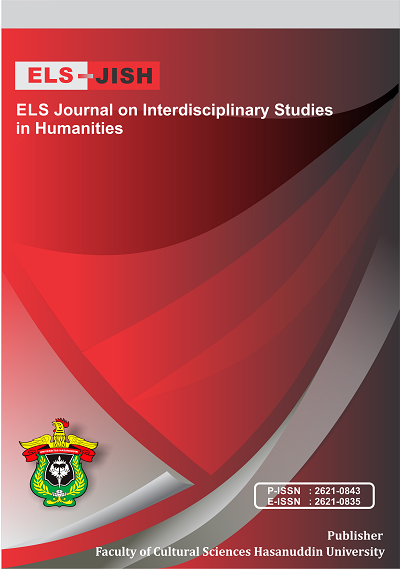The Representation of Social Class in the Illustration of Sketches by Boz by Dickens
DOI:
https://doi.org/10.34050/elsjish.v3i4.11914Keywords:
Charles Dickens, Narration, Illustration, Social ClassAbstract
The study object in this research is the representation of social class in the illustration of Sketches by Boz by Charles Dickens (1895). Social class is one of the most prominent themes raised by Charles Dickens in his work to satirize the condition of Victorian England as a form of empathy towards the lower class people. Dickens tries to portray that phenomenon into a series of story and illustration of people’s everyday life in his work ‘Sketches by Boz’. However, this social phenomenon is always depicted and discussed mostly in term of the narration form. On the contrary, illustration is often being ignored. The aim of this study is to bring together the importance of illustration in its relationship to the text. The method used in this study was a descriptive qualitative. It will examine how social class is portrayed in the illustration of Dickens’ Sketches by Boz by focusing particularly on the variety of techniques used by the illustrators in producing the illustrations. The result shows that both narration and illustration highlights the social class reality in the Victorian era. The narration and the illustration cannot be separated in Charles Dickens’ Sketches by Boz since it is created to be a description of people’s everyday life in Victorian London.
Keywords: Charles Dickens, Illustration, Narration, Social Class
References
Browning, R. (2013). Sketches by Boz. In Dickens and the Twentieth Century. https://doi.org/10.1093/nq/175.1.15d
Cohen, J. R. (1980). Charles Dickens and his Original Illustrators. Ohio: Ohio State University Press.
Cordery, G. (2005). An Edwardian’s View of Dickens and his Illustrators: Harry Furniss’s “A Sketch of Boz.” Greensboro, North Carolina: ELT Press.
Daniels, M. (1988). Victorian Book Illustration (N. . Wolfeboro, ed.). London: British Library.
Dickens, C. (1895). Sketches by Boz, Edwin Drood and Reprinted Pieces. London: Chapman.
Emily E. Marsh, M. D. W. (2003). A taxonomy of relationships between images and text. Journal of Documentation, Vol. 59(6), 647–672.
Forster, J. (1872). The Life of Charles Dickens: 1812-1842. London: Chapman and Hall.
Hodnett, E. (1982). Image and Text: Studies in the Illustration of English Literature. Aldershot: Scolar Press.
Indrasari, D. N., Rahman, F., & Abbas, H. (2020). Middle Class Women Role in the 19th Century as Reflected in Bronte’s Wuthering Heights. ELS Journal on Interdisciplinary Studies in Humanities, 3(2), 214–218. https://doi.org/10.34050/els-jish.v3i2.9143
Patten, R. L. (2012). Charles Dickens and “BOZ”: The birth of the industrial-age author. In Charles Dickens and “Boz”: The Birth of the Industrial-Age Author. https://doi.org/10.1017/CBO9781139151702
Samples, M. (2013). This world of sorrow and trouble the criminal type of Oliver Twist.
Weitzmann, K. (1970). Illustrations in Roll and Codex: A Study of the Origin and Method of Text Illustration. Princeton University Press.
Downloads
Published
How to Cite
Issue
Section
License

This work is licensed under a Creative Commons Attribution-NonCommercial 4.0 International License.






